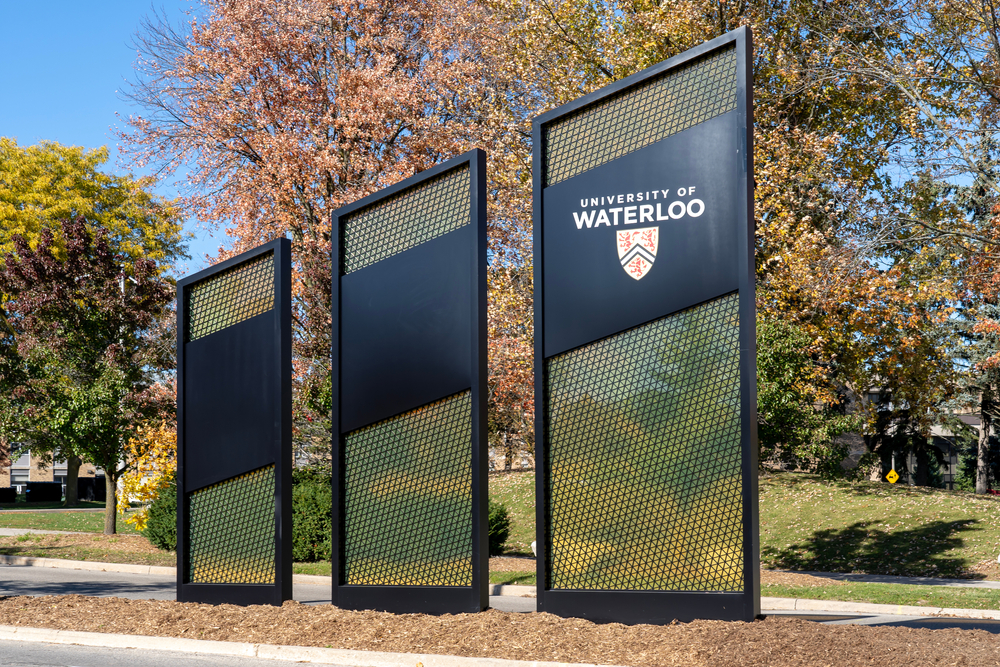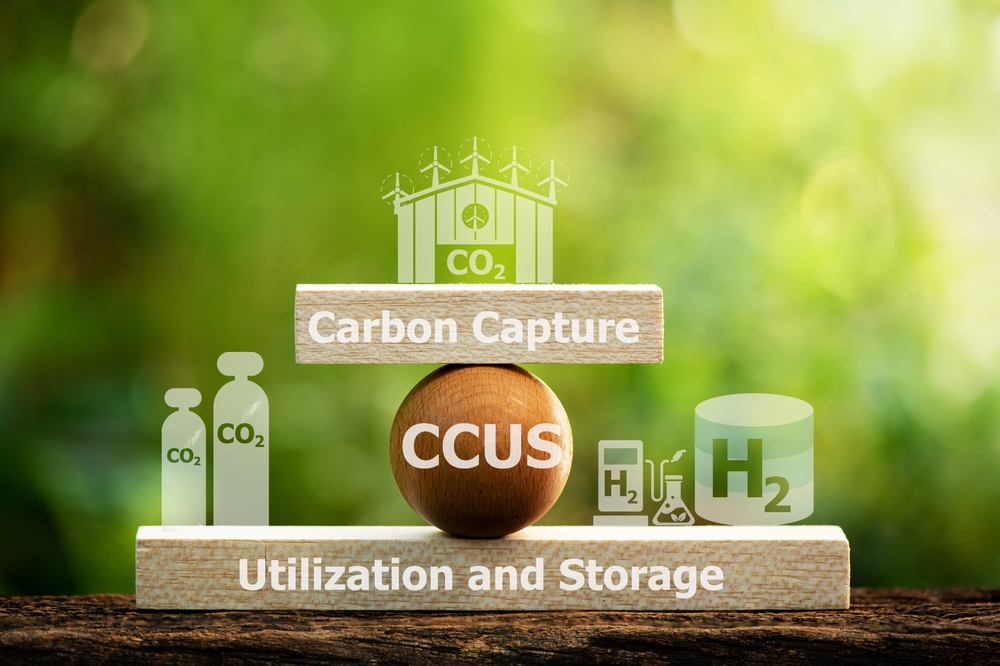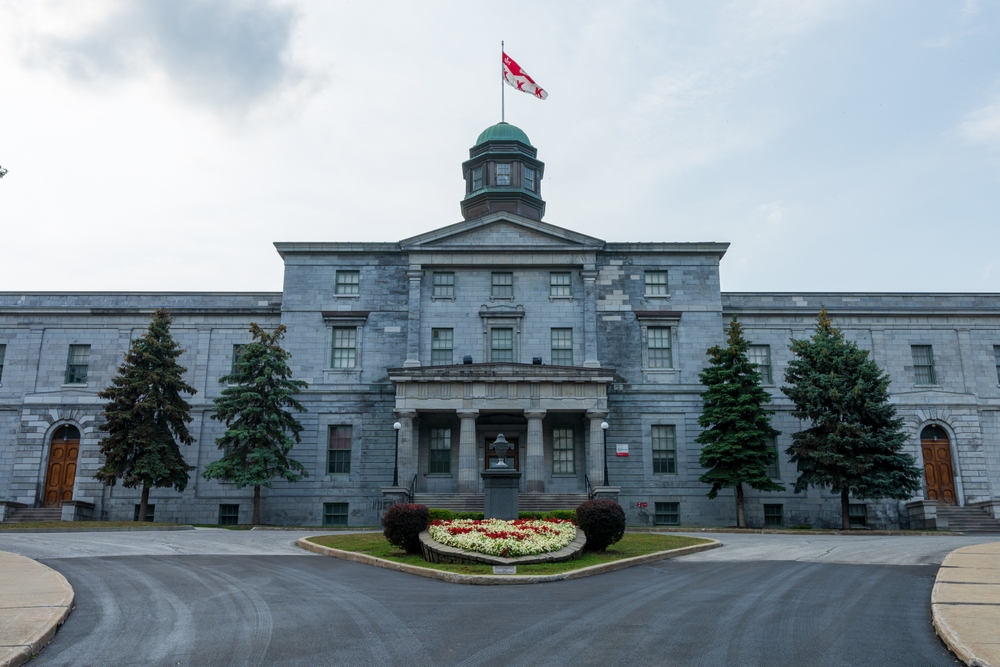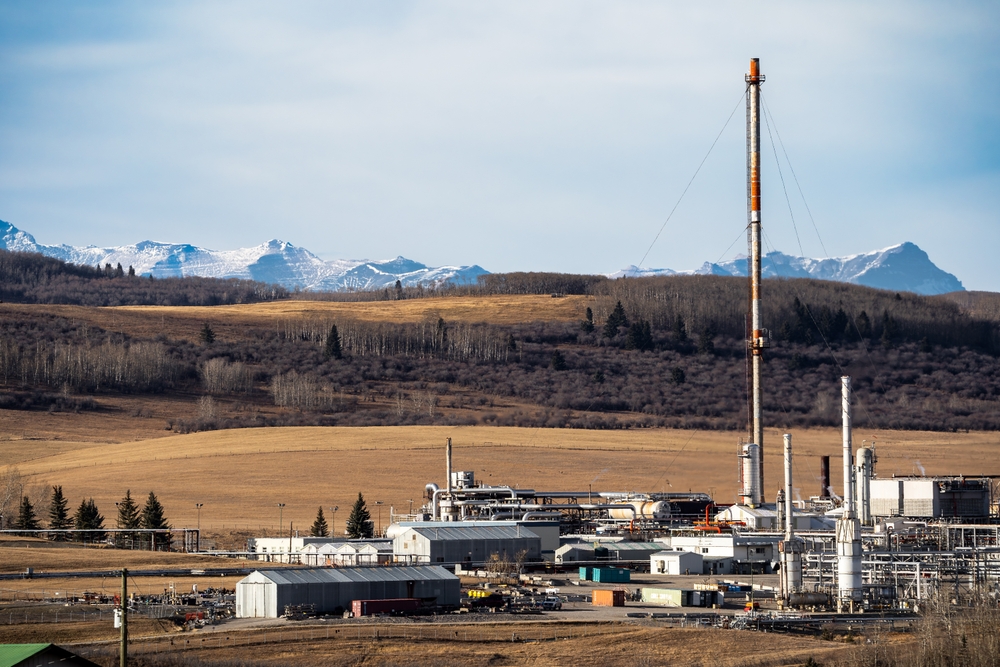While the United States often dominates headlines for groundbreaking discoveries, its quiet northern neighbor has been outpacing it in several fields. From healthcare and clean energy to artificial intelligence and environmental policies, Canadian innovation has been shaping the future with less noise and more results. What’s remarkable is that many of these advancements are not only technologically superior but also more sustainable and inclusive. Here are 21 Canadian innovations that are years ahead of the U.S.
AI Research Leadership through Vector Institute

The Vector Institute in Toronto has become a global powerhouse in artificial intelligence research, thanks to foundational contributions from Geoffrey Hinton, often called the “Godfather of Deep Learning.” Canada began funding AI projects years before the U.S. poured federal resources into the field, creating a talent pipeline that feeds global tech giants. The institute collaborates with both academia and industry, fostering innovation in natural language processing, computer vision, and machine learning applications in healthcare. Its open research culture encourages global collaboration, ensuring Canada remains at the forefront while the U.S. struggles with privatized AI development silos.
Universal Healthcare Data Innovation

Canada’s single-payer healthcare system gives researchers unparalleled access to longitudinal health data across provinces, something fragmented U.S. systems can’t match. This national database allows Canadian scientists to test public health interventions, predict outbreaks, and develop AI-driven diagnostic tools far more efficiently. The integration of patient data into real-time research has accelerated medical discoveries, such as precision oncology and predictive analytics for chronic diseases. By leveraging national-scale datasets ethically, Canada leads in health informatics, an area where the U.S. remains bogged down by privacy lawsuits, corporate data hoarding, and incompatible electronic record systems.
Quantum Computing in Waterloo

The Perimeter Institute and the University of Waterloo have positioned Canada as a quantum computing pioneer. With companies like D-Wave and Xanadu, Canada has been commercializing quantum technologies long before similar U.S. startups gained attention. D-Wave released the first commercial quantum computer in 2011, focusing on optimization problems, while U.S. counterparts were still in experimental phases. Government funding and cross-industry partnerships have created a fertile ecosystem for quantum innovation. The result is a national advantage in materials science, cryptography, and computational modeling, fields where American initiatives are still playing catch-up.
Carbon Capture and Storage Leadership

Saskatchewan’s Boundary Dam Project was the world’s first commercial-scale carbon capture and storage (CCS) facility, proving that emissions reduction technology could be viable for large-scale use. The project captures nearly a million tonnes of CO₂ annually and stores it underground, while similar U.S. facilities struggled to scale. Canadian researchers have continued refining CCS technology, focusing on cost reduction and better monitoring systems. The integration of carbon capture into industrial processes has given Canada a tangible head start in emission control innovations, something the U.S. is still trying to coordinate through fragmented state-level policies.
Advanced Transit Design with Bombardier

Before U.S. cities even began discussing high-speed trains and electric monorails, Bombardier was already building them. From SkyTrain systems in Vancouver to driverless metro lines in Europe and Asia, the company revolutionized urban transit efficiency. The U.S., by comparison, has lagged in developing similar infrastructure due to political gridlock and underfunding. Bombardier’s innovations in lightweight materials, energy recovery systems, and automated control software have set international benchmarks. Its expertise helped design transit solutions now being replicated abroad, reinforcing Canada’s lead in sustainable, high-capacity public transportation technologies.
Electric Aviation by Harbor Air

Harbor Air, a Vancouver-based airline, became the first in the world to operate a fully electric commercial aircraft. The airline successfully retrofitted its seaplanes with electric propulsion systems developed in collaboration with magniX, significantly reducing emissions on short routes. This innovation arrived well before the U.S. Federal Aviation Administration began certifying electric aircraft for passenger service. Harbor Air’s model demonstrates that electrified aviation is feasible for regional travel and could redefine short-haul mobility. The company’s progress in battery efficiency and flight certification has turned British Columbia into a living testbed for next-generation aviation.
Fusion Research through General Fusion

General Fusion, headquartered in Burnaby, British Columbia, has become one of the world’s leading private fusion energy ventures. Backed by Jeff Bezos and several international investors, it is developing a magnetized target fusion system that could provide sustainable, zero-carbon energy decades before U.S. fusion programs reach commercial viability. Unlike the heavily government-dependent U.S. projects, General Fusion’s model combines public research with private efficiency, speeding up testing and scaling. Its approach may redefine how the world achieves clean energy independence, positioning Canada as a serious contender in the global fusion race.
Smart Healthcare Robots from McGill

Researchers at McGill University have been pioneering surgical robotics and rehabilitation technologies far ahead of many U.S. medical programs. Their AI-assisted robots can perform micro-surgeries with precision that surpasses current human capabilities, while rehabilitation robots aid stroke recovery with adaptive learning software. Unlike in the U.S., where FDA approvals can delay clinical deployment, Canada’s integrated academic-hospital networks allow faster trials and implementation. These advancements are setting new global standards for robotic care, showing how innovation can thrive when research and healthcare institutions are directly linked in practice.
Clean Hydrogen Development in Alberta

While U.S. debates over hydrogen infrastructure continue, Alberta is already scaling up one of the world’s largest clean hydrogen hubs. The province combines natural gas reforming with carbon capture, ensuring near-zero emissions. Projects like Air Products’ Net-Zero Hydrogen Complex have drawn global attention for their early integration of large-scale hydrogen fueling networks. This shift transforms Alberta from an oil-dependent region into a clean energy innovator. The U.S. still lacks cohesive national hydrogen strategies, whereas Canada’s public-private cooperation has created an actionable roadmap toward decarbonized heavy industry and transport.
Biodegradable Plastics from Saskatchewan

Saskatchewan’s researchers have developed biodegradable plastics made from canola oil and agricultural waste, offering an eco-friendly alternative to petroleum-based polymers. These materials decompose naturally without releasing toxins, addressing the environmental crisis caused by microplastics. The U.S. has yet to commercialize similar bioplastics on a national scale. By connecting agriculture and environmental science, Canadian startups have found ways to monetize farm byproducts while reducing plastic dependency. This circular approach supports both sustainability and rural economic resilience, showcasing how innovation can thrive beyond major cities.
Climate-Resilient Agriculture Models

Canadian researchers have long led in developing climate-resilient crop strains, soil health technologies, and precision agriculture tools suited for harsh weather. The Prairie provinces have turned data analytics and drone imaging into farm management essentials, increasing yields while reducing water use. These systems are far more advanced than the fragmented precision agriculture models currently tested in the U.S., and Canadian ag-tech startups collaborate directly with farmers, accelerating adoption through government-backed funding programs. Their work ensures food security even as global temperatures shift, giving Canada an edge in sustainable agricultural adaptation.
Indigenous-Led Conservation Innovation

One of Canada’s most forward-thinking environmental strategies involves Indigenous-led conservation. Programs like the Indigenous Guardians Network blend traditional ecological knowledge with modern environmental science to manage lands more effectively. These models have been adopted internationally and are recognized by the United Nations. In contrast, similar frameworks in the U.S. remain underfunded or symbolic. Canada’s approach demonstrates how decolonized conservation can produce measurable ecological results, preserving biodiversity while empowering local communities. The result is an environmental stewardship model that blends heritage and innovation in equal measure
Smart Grids and Energy Storage in Ontario

Ontario’s early adoption of smart grid systems has made it one of the most energy-efficient regions in North America. Real-time data collection and AI-driven energy distribution have reduced blackouts and optimized the integration of renewable energy sources. Projects like the Independent Electricity System Operator’s demand-response program are years ahead of similar efforts in the U.S., where grid modernization remains politicized. The combination of renewable energy storage, electric vehicle integration, and predictive analytics makes Ontario a model for 21st-century electricity management, offering a glimpse into the future of reliable, intelligent power systems.
Mental Health Tech Platforms

Toronto and Montreal have become global hubs for mental health technology, offering solutions that outpace most American models. Startups like MindBeacon and Inkblot offer accessible digital therapy platforms that are integrated directly into Canada’s healthcare ecosystem. Their evidence-based designs ensure that users receive affordable, insured access to professionals without the bureaucracy typical in U.S. systems. These innovations reduce stigma and waiting times for care, setting international benchmarks for mental health accessibility. By merging clinical oversight with digital convenience, Canada is years ahead in normalizing and streamlining mental health support.
Ocean Tech from the Atlantic Provinces

The Atlantic provinces have quietly built one of the world’s strongest ocean technology clusters. Companies like Kraken Robotics and Ocean Supercluster are developing marine sensors, autonomous submarines, and AI-based ocean mapping systems. These technologies are vital for climate monitoring, undersea infrastructure, and sustainable fisheries management. The U.S. is still centralizing its ocean research efforts, while Canadian startups are already commercializing results. By focusing on ocean sustainability, these provinces are turning marine science into an export industry, proving that innovation doesn’t have to come from major tech capitals.
Digital Government Services

Canada’s government digitalization has advanced far faster than in the U.S. Initiatives like the Canada Digital Service and My Service Canada account have streamlined public access to benefits, taxes, and IDs through secure, user-friendly platforms. By centralizing services and applying privacy-focused tech, Canada has achieved efficiency levels that many U.S. departments still lack. Citizens can update records, access health information, and apply for benefits seamlessly online. This focus on accessibility and transparency has made Canada’s e-governance a global model for functional, people-first public technology systems.
Public Transit Payment Integration

Toronto’s Presto Card and Vancouver’s Compass Card systems integrate bus, subway, train, and ferry payments through unified digital platforms. This level of system-wide coordination remains rare in the U.S., where cities maintain separate payment systems. Canada’s transit tech allows tap-in-tap-out convenience across regions, improving user experience and data-driven scheduling. The adoption of mobile wallets and contactless payment expanded early, helping cities manage peak-hour demand more effectively. These transit solutions demonstrate how policy, technology, and convenience can work together without fragmentation or delay.
Arctic Research and Climate Monitoring

Canadian scientists lead in polar climate monitoring through networks like Polar Knowledge Canada. Their autonomous sensors, satellite systems, and ice-monitoring drones provide critical data for global climate models. The U.S. relies heavily on international collaboration for Arctic data, while Canada maintains its own robust infrastructure. These innovations help predict sea-level rise, wildlife migration, and permafrost changes with unmatched accuracy. The nation’s long-term investment in Arctic science not only aids global understanding of climate change but also establishes sovereign expertise in one of Earth’s most fragile regions.
Affordable Housing Construction Tech

Innovators across Canada have been developing modular and 3D-printed housing solutions that drastically reduce costs and build times. Companies like Nidus3D and Horizon North have created sustainable housing units for under $150 per square foot—half the U.S. average. The government’s integration of these technologies into national housing strategies accelerates scaling. These systems use recycled materials, energy-efficient designs, and rapid assembly, addressing affordability without sacrificing quality. The result is a construction ecosystem that solves urban housing crises faster than U.S. cities constrained by zoning battles and outdated methods.
Electric Vehicle Battery Recycling

Li-Cycle, a Toronto-based company, has become a global leader in recycling lithium-ion batteries. Its process recovers over 95 percent of critical materials like lithium, cobalt, and nickel without harmful emissions. U.S. recycling facilities are still catching up in both efficiency and environmental safety. Li-Cycle’s hydrometallurgical method has turned Canada into a strategic battery hub for the electric vehicle industry. As nations scramble to secure supply chains, Canada’s closed-loop system ensures long-term sustainability and resource independence, making it a vital player in the electric mobility revolution.
Digital Health Identity Systems

Provinces like British Columbia have introduced digital health IDs that securely connect patients, providers, and pharmacies through blockchain-backed systems. This integration allows instant prescription refills, real-time medical updates, and cross-province accessibility. The U.S. still struggles with fragmented insurance networks and inconsistent patient data management. By prioritizing privacy and interoperability, Canada has built a model where citizens truly own their medical information. These systems streamline healthcare operations while maintaining transparency and security, making the country’s digital identity framework one of the most advanced globally.
21 Products Canadians Should Stockpile Before Tariffs Hit

If trade tensions escalate between Canada and the U.S., everyday essentials can suddenly disappear or skyrocket in price. Products like pantry basics and tech must-haves that depend on are deeply tied to cross-border supply chains and are likely to face various kinds of disruptions
21 Products Canadians Should Stockpile Before Tariffs Hit
